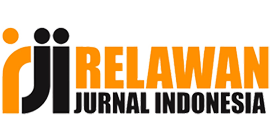Pengembangan E-Modul pada Mata Pelajaran Pendidikan Jasmani Olahraga Kesehatan Kelas XI
DOI:
https://doi.org/10.31539/e-sport.v5i2.15447Abstract
This study aims to 1) determine the development needs. 2) determine the design of the E-Module development. 3) determine the level of validity of the E-Module development. 4) determine the level of practicality of the E-Module development. This study uses the R&D approach with the Thiagarajan development model, which consists of several stages, namely the definition stage, the design stage, the development stage, and the dissemination stage. Data collection techniques include questionnaires, interviews, and documentation. The study results show that 1) The definition stage, Identification of needs, students of UPT SMA Negeri 20 Bone need digital-based learning E-Module. 2) The design stage involves developing materials, making media into E-Modules, and compiling practice questions. 3) Expert/Validity testing is carried out in 2 ways: through alpha testing by media design experts with excellent qualifications and content/material experts with excellent qualifications. 4) A beta test at the product trial stage was conducted by testing a small group of students selected based on random sampling consisting of 5 students with practical qualifications then the large group trial obtained an efficient qualification, and the trial by the subject teacher of physical education, sports, health obtained an efficient qualification. The E-Module in Physical Education, Sports, and Health is feasible for UPT SMA Negeri 20 Bone.
Keywords: E-Module, Development, PJOK
References
Depdiknas. (2003). Undang-undang RI No.20 tahun 2003. Tentang Sistem Pendidikan Nasional
Elvarita, A., Iriani, T., & Handoyo, S. S. (2020). Pengembangan Bahan Ajar Mekanika Tanah Berbasis E-Modul Pada Program Studi Pendidikan Teknik Bangunan, Universitas Negeri Jakarta. Jurnal Pensil, 9(1), 1–7. Https://Doi.Org/10.21009/Jpensil.V9i1.11987
Farida, N., & Ratnawuri, T. (2021). Analisis Kebutuhan Pengembangan E-Modul Berbantu Flipbook pada Mata Kuliah Statistik. Jurnal Lentera Pendidikan Pusat Penelitian LPPM UM Metri, 6(2), 191-195. https://ojs.ummetro.ac.id/index.php/lentera/article/view/1814
Herawati, N. S., & Muhtadi, A. (2018). Pengembangan Modul Elektronik (E-Modul) Interaktif pada Mata Pelajaran Kimia Kelas XI SMA. Jurnal Inovasi Teknologi Pendidikan, 5(2), 180–191. https://media.neliti.com/media/publications/372675-developing-interactive-chemistry-e-modul-7f1709a8.pdf
Laili, I., Ganefri, G., & Usmeldi, U. (2019). Efektivitas Pengembangan E-Modul Project Based Learning pada Mata Pelajaran Instalasi Motor Listrik. Jurnal Imiah Pendidikan dan Pembelajaran, 3(3), 306–315. https://ejournal.undiksha.ac.id/index.php/JIPP/article/download/21840/13513
Nugraha, A., Subarkah, C., & Sari, S. (2015). Penggunaan E-Module Pembelajaran pada Konsep Sifat Koligatif Larutan untuk Mengembangkan Literasi Kimia Siswa. Prosiding Simposium Nasional Inovasi dan Pembelajaran Sains, 201-204. https://digilib.uinsgd.ac.id/14183/
Rohmah, S. M., & Robiah, S. (2024). Analisis Kebutuhan Siswa dan Guru terhadap E-Modul Terintegrasi Nilai MTQ di MAN 3 Kota Pekanbaru. Biopendix, 10(2), 213-217. https://ojs3.unpatti.ac.id/index.php/biopendix/article/view/12195/7365
Sugiyono, S. (2013). Metode Penelitian Pendidikan (Pendekatan Kuantitatif,Kualitatif dan R&D). Bandung: Alfabeta.
Suryadie, D. (2014). Pengembangan Modul Elektronik IPA Terpadu Tipe Shared Untuk Siswa Kelas VIII SMP/MTs. Yogyakarta: UIN Sunan Kali Jaga. http://digilib.uin-suka.ac.id/id/eprint/10934
Winarni, R., & Astuti, E. R. P. (2020). Pengaruh Penggunaan Media Pembelajaran Storyboard Terhadap Kreativitas Belajar Sisiwa pada Mata Pelajaran Seni Budaya. Jurnal Teknologi Pendidikan: Jurnal Penelitian dan Pengembangan Pembelajaran, 4(2), 69–79. https://e-journal.undikma.ac.id/index.php/jtp/article/view/2249
Zendrato, W. (2020). Gerakan Mencegah Daripada Mengobati terhadap Pandemi COVID-19. Jurnal Education and Development, 8(2), 242. https://doi.org/10.37081/ed.v8i2
Downloads
Published
Issue
Section
License
Copyright (c) 2025 Misdah Misdah, Pattaufi Pattaufi, Ahmad Jamalong

This work is licensed under a Creative Commons Attribution-NonCommercial 4.0 International License.

